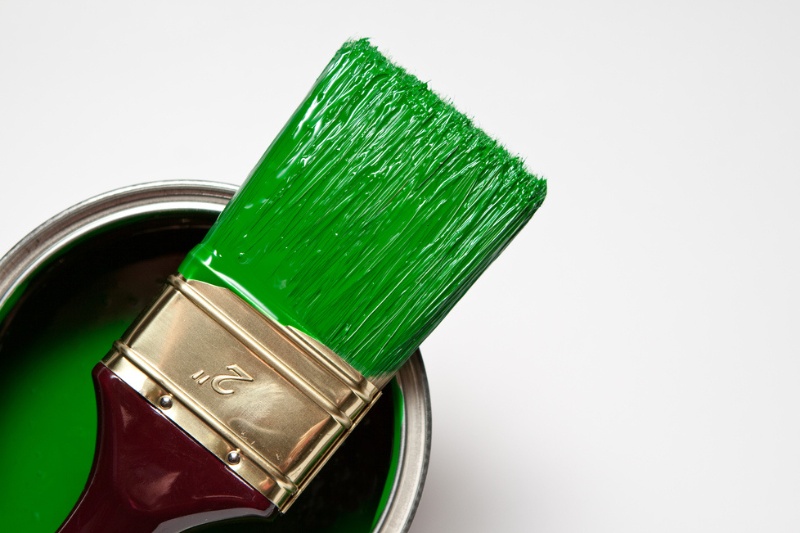Gloss paint can give your home a fresh and vibrant appearance, but when it comes to cleaning up after painting, things can get a bit tricky.
Gloss paint loves to cling to brushes, making the cleaning process a bit more demanding compared to other types of paint.
Gloss paint is known for its high sheen and durability. It’s a go-to choice for many of us as it is great for spots in the house that see a lot of wear and tear, and it is so easy to wipe clean.
Sadly, the same ingredients that give gloss paint these awesome properties that we are looking for are the same that make it very difficult to get off of our brushes.
Still, there is no need to throw away your paint brushes. Here’s a step-by-step guide to cleaning paint brushes with gloss paint on them.
With the right cleaning products and methods, it’s easy, we promise!
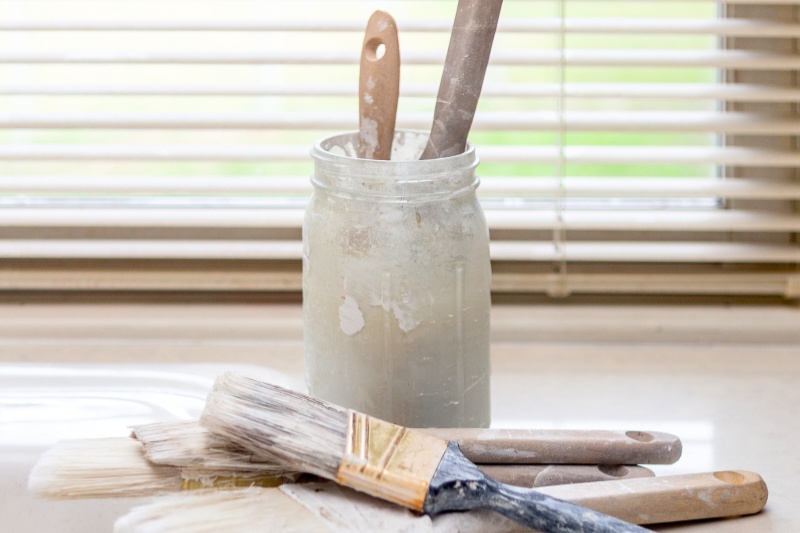
Materials You’ll Need
As most gloss paints are oil-based, you’ll need some cleaning supplies that can breakdown this oil and leave your brushes perfectly clean.
So, before you begin the cleaning process, it’s time to gather the materials you’ll need which includes:
- White spirit – This solvent is really effective at breaking down and removing oil-based gloss paint
- Old container or jar – Use a container or jar that you don’t mind dedicating to paint brush cleaning. An old coffee jar or jam jar is ideal for this.
- Old rag or paper towels – These will help you wipe off excess paint and solvent from the brush.
- Rubber gloves – These will protect your hands from the solvent and prevent it from painting your fingernails an attractive and very difficult-to-remove colour!
- Soap and water – For the final cleaning step.
- Paint brush comb – This will help you remove any remaining paint from the brush.
- Safety glasses – To protect your eyes during the cleaning process.
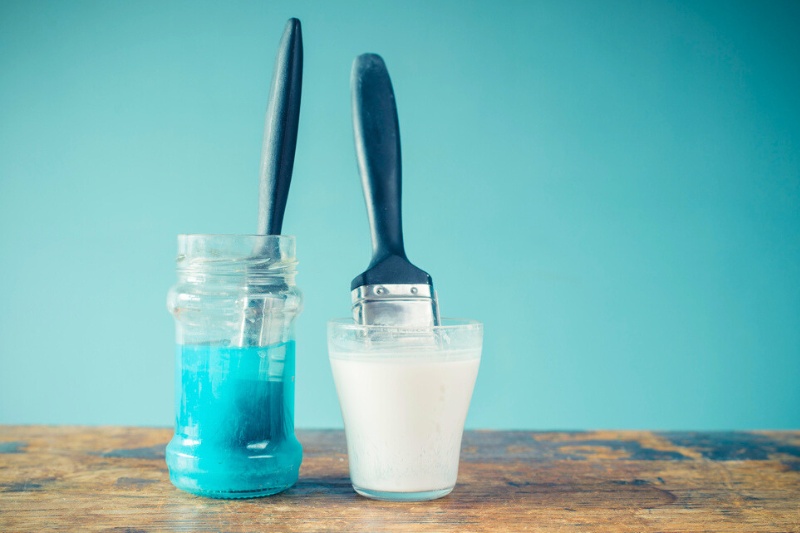
How to Remove Gloss Paint from Paint Brushes
1. Initial cleaning
Immediately after finishing your painting session, remove the excess paint from the brush by gently tapping it against the inside of the paint can.
Use an old rag or paper towel to wipe off as much paint as possible.
2. Solvent soak
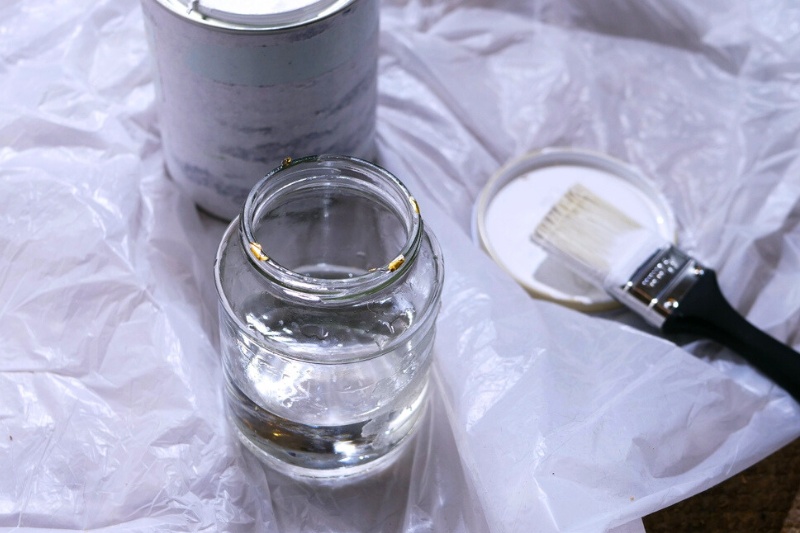
Fill your old container or jar with enough white spirit to completely submerge the bristles of the paintbrush.
Avoid using too much solvent, as that’s just wasteful. Swirl the brush in the solvent for a few minutes, allowing the solvent to dissolve the paint.
For stubborn paint, you might need to soak the brush for a longer period.
If you have some more painting to do later, you can keep the brush in the white spirit to stop it drying out. Just wipe off the excess white spirit before you start painting again.
3. Clean the bristles
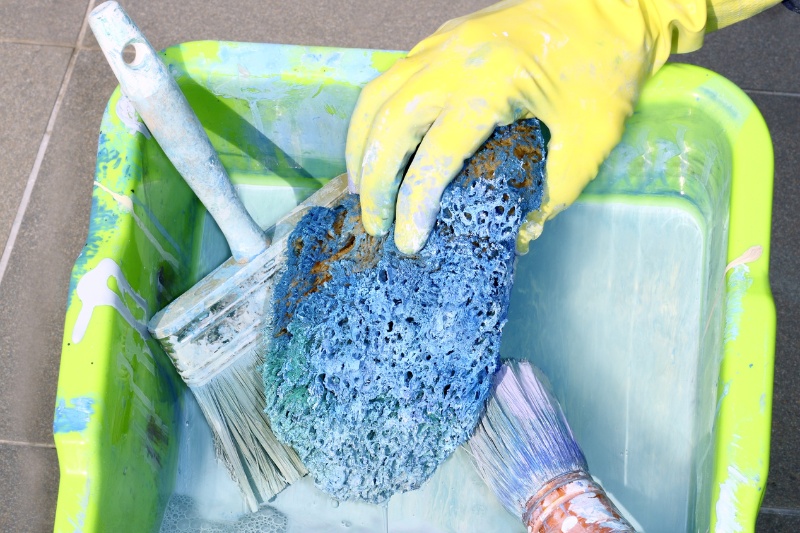
After soaking, remove the brush from the solvent and gently squeeze the bristles to remove excess liquid.
Use your rag or towel to soak up the paint and the white spirt. Use a paint brush comb to carefully remove any remaining paint from the bristles.
This step requires patience, as you want to ensure that all paint residues are removed. This will ensure that when you go to use the brush, it doesn’t feel clogged.
4. Final rinse
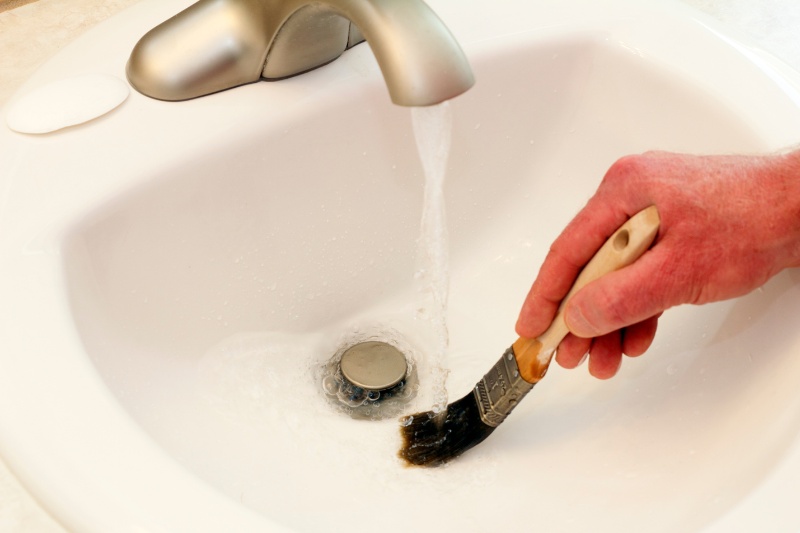
Wash the brush under running water to remove the remaining white spirt and paint residue. Use a mild soap (like washing-up liquid) to clean the bristles thoroughly.
Remember to wear rubber gloves to protect your hands from the paint and solvent. Continue rinsing until the water runs clear and all traces of paint and solvent are gone.
5. Dry
Gently pat the bristles dry with a clean cloth or paper towel. Shape the bristles back into their original form, ensuring that they are neat and not splayed out. Lay the brushes flat to dry.
6. Condition the bristles
After the paintbrush is dry, you can condition the bristles to keep them soft and pliable.
For natural bristle brushes, use a small amount of linseed oil and work it into the bristles.
For synthetic bristles, a small amount of fabric softener mixed with water will work wonders.
7. Storage

Store your clean and conditioned brushes in a cool, dry place away from direct sunlight.
Proper storage will help prolong the life of your brushes and keep them in good working condition for your next painting project.
In Conclusion
Cleaning gloss paint out of paint brushes requires a bit more effort and attention compared to other paints.
However, with the right materials, techniques, and a little patience, you can effectively clean your brushes and maintain their quality for future use.
Remember to wear gloves and safety glasses, especially when dealing with solvents.
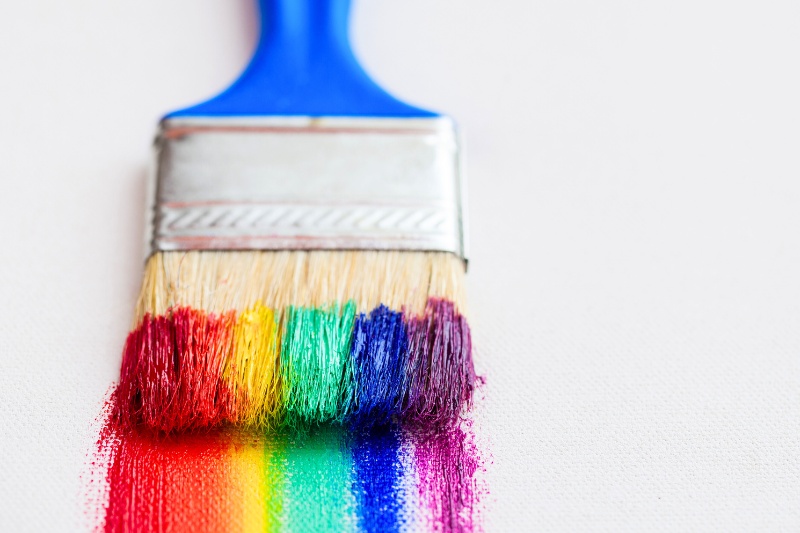
White spirt is pretty nasty stuff, and you don’t want it on your skin or in your eyes.
With these steps, you can keep your painting tools in excellent shape, ensuring that your next painting project goes off without a hitch.

In The Wash is your guide to the best laundry and cleaning products, tips and tricks. Our mission is to solve the UK’s cleaning and laundry dilemmas!
